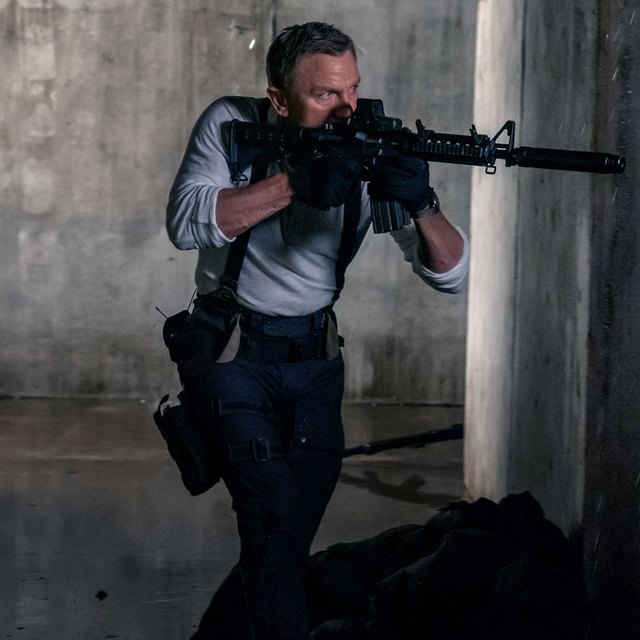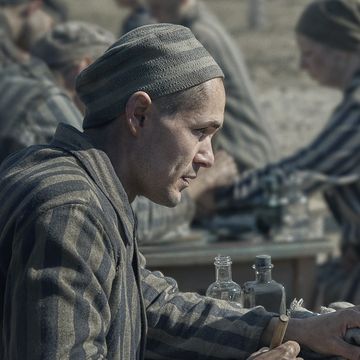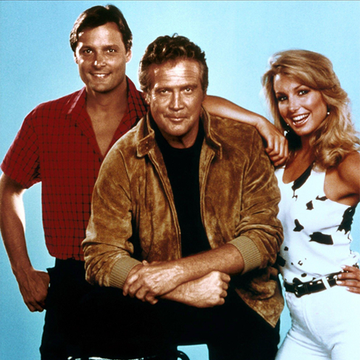Even as the rockets homed in on him, as he said goodbye to Madeleine and the MI6 crew at the end of No Time To Die, it felt like James Bond might find another rabbit to pull out of the hat.
Surely – surely – Bond couldn’t die, right? He survived having his spine stretched like Play-Doh in Thunderball. He survived having his memories drilled out of his skull in Spectre. He survived boinging down the Millennium Dome in The World Is Not Enough. He could have dodged a few missiles and been back in Blighty in time for supper.
But no: James Bond is definitely dead. Director Cary Joji Fukunaga confirmed to Empire that the ending of No Time To Die was constructed to be as definite and conclusive as possible on that score.
“I wanted to be clear with it. We didn’t want that shot in Terminator 2 where you see Sarah Connor turning into bones,” he said. “But we wanted to show that he wasn’t going to jump down a sewer at the last second. So that wider shot of the island being pummelled was a mixture of macro and micro. The full effect is, ‘Yes, he’s gone, but he succeeded in making sure none of that weapons would go on into the future.’”
Just to recap that ending: after a scrap with Rami Malek’s Safin in which the genocidal creeper smashed a vial of nanobots on Bond’s head and Bond snapped Safin’s arm in half with his bare hands, Bond was left with the realisation that he couldn’t leave Safin’s island. The nanobots were programmed to kill Madeleine and his daughter Mathilde; as soon as he touched them, they’d die.
He says a final farewell to Madeleine: “You have all the time in the world.” Madeleine tells him Mathilde has his eyes. He knows. He stares at the sunset. He gets atomised by HMS Dragon’s rockets. Q cries.
(A slightly overlooked aspect of Commander Bond’s death is that he was killed not by any freakish henchman or meticulously crafted masterplan, but by his Royal Navy colleagues. Having done its very best to help him die by throwing him into hopelessly dangerous situations for 60 years now, it’s fitting that the British state finally got its man. It was always for Queen and country, and in the end QE2 gave him the death he clearly yearned for with a Sea Viper to the face. Thank you, ma’am.)
Yet in another sense, Bond isn’t dead. That Bond is dead, for sure. Daniel Craig ain’t coming back. The MI6 crew – Ralph Fiennes’ M, Naomie Harris’ Moneypenny, Ben Whishaw’s Q, Rory Kinnear’s lesser-spotted Bill Tanner – are, essentially, dead too. They’re not coming back.
But James Bond will, as ever, return. Quite what happens now is up in the air, and it’ll be a lot easier to imagine how all this pans out when we know who’s picking up the keys to the DB5 next.
There’s a fair bit of yearning among some Bond fans for a one-off period piece set in the early Cold War years which Ian Fleming’s spy first strode out of. That feels like extremely wishful thinking, though.
While a hard reset seems most likely right now, given the financial juggernaut which Craig’s Bond films turned into was driven by the head of steam it built up over five interconnected films it’d make sense if Eon wanted another multi-film saga fronted by one Bond.
Barbara Broccoli, the head honcho of the Bond franchise, has described making Bond spin-offs with peripheral characters as being “like making Hamlet without Hamlet”. But any new Bond has to be a new chance to build out an extended, Marvel-style universe. The MI6 family could, this time, be allowed their own spin-offs.
Bond’s death feels almost quaint; the kind of rug-pull ending which only the truly gigantic blockbusters get to pull, and which are deemed so important that it’s not immediately spoiled on the internet. But in other ways, it’s hard to imagine the character being able to pull off the dead-but-not-dead thing – being Schroedinger’s state-backed hitman – at any point in cinema history other than right now.
Nobody dies in mega-franchises anymore, unless they’re Harrison Ford. The whole architecture of the modern blockbuster franchise is designed to keep as many characters as possible in play for as long as possible, whether via diverging timelines, bubble universes or your common-or-garden time-jumps and prequels.
That’s not to say that there’s a multiverse at play in the SIS building on the south side of Vauxhall Bridge, but the ease with which audiences can hold multiple conflicting and contradictory story-worlds in their heads within the same franchise does make it easier to just rip things up and start again.
And at any rate, this is kind of the thing Bond has done since 1962. So James Bond is dead – properly dead – for the first time. It feels weird. But you’ll partition off the Craig years in your head just like you did the Brosnan years, the Dalton years, the Moore years, the Lazenby year.
The pretence that this is the same guy, with the same car, was never really the point. It’s the constant change and renewal that has made Bond work as a film franchise. And now it’s happening all over again.

Nick Pope is the Site Director of Esquire, overseeing digital strategy for the brand.













